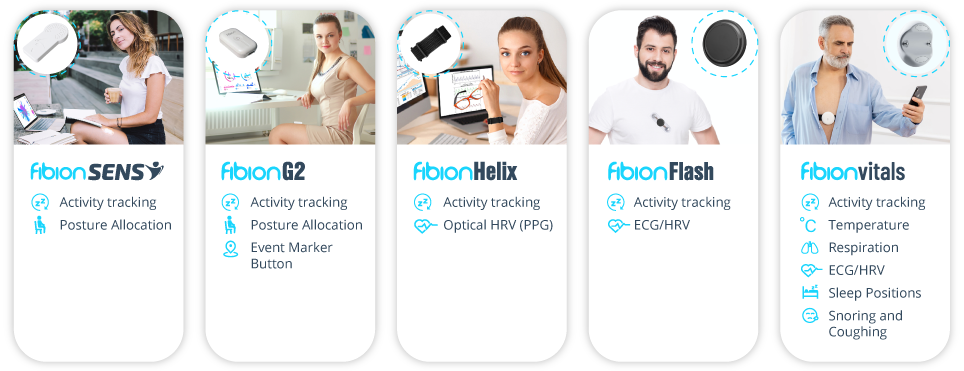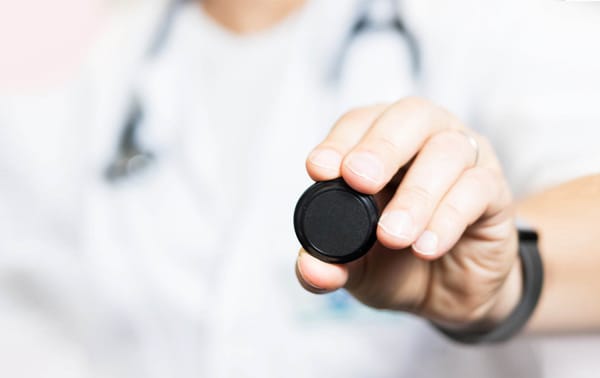Pioneering Tools for Your Research Needs

High precision sensors for tracking movement, posture, and key events.
Fibion Sedentary and Physical Activity Solutions

Fibion SENS
Worn on the thigh or wrist, Fibion SENS sensor collects high-resolution tri-axial acceleration data, ensuring reliable actigraphy measurements smooth and hassle-free. No charging, no cables, no buttons for 22 weeks of measurement time.
Fibion G2
Fibion G2 is validated for physical activity and sleep measurement. Weighing under 10 grams, it offers up to 10 weeks of comprehensive recording with easy data transfer, an event marker button, flexible wearing options, and detailed activity (postures like sitting, standing, and cycling).


Fibion Krono
Versatile device with an event marker and sensors that track body temperature, activity, position, and light exposure for over 14 days. Backed by 8 years of research, validated by polysomnography, reliable across diverse populations, trusted by the scientific community.

Fibion Helix
Fibion Helix is a compact wearable that monitors sedentary behavior and physical activity, including sitting, standing, and activity intensity. With advanced skin contact and 3-axis accelerometer sensors, and 5-day battery life, it delivers reliable data for wellness researchers and programs.
Fibion Flash
Fibion Flash is a compact wearable sensor that measures sedentary behavior, physical activity, ECG, and heart rate variability. With a 9-axis motion sensor, long battery life, and water resistance, it offers reliable, high-resolution data for researchers and professionals.


Fibion Vitals
An advanced solution with additional bio-signal sensors for temperature, respiration, and ECG/HRV that collaborate to provide a holistic data collection experience for in-depth sedentary and physical activiy research analysis.
Reliable research devices providing valuable insights for both children and adults.
We Have a Solution for Your Needs












